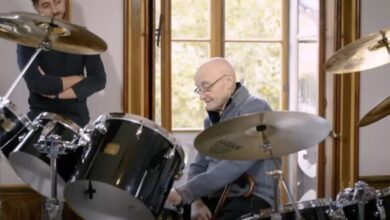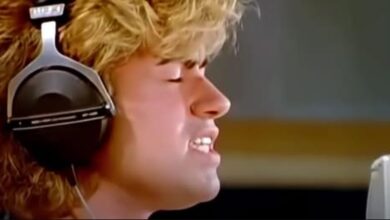One Of Singers Who Actually Never Used Auto Tune, Just Pure Talent And Hard Work
“A-ha – Take On Me” is an iconic song that epitomizes the synthesis of music and visual artistry in the 1980s. Released in 1985, it is the Norwegian synth-pop band a-ha’s debut single from their first album, “Hunting High and Low.” The song is renowned not just for its catchy melody and innovative sound but also for its groundbreaking music video that features a blend of pencil-sketch animation and live-action.
The development of “Take On Me” was a meticulous process, with the song undergoing various iterations before reaching its final form. Initially written by the band’s lead vocalist, Morten Harket, keyboardist Magne Furuholmen, and guitarist Pål Waaktaar-Savoy, the track originally had a different title and melody. It was only after multiple rewrites and production adjustments that the song evolved into the version widely known today.
The distinctive sound of “Take On Me” is characterized by its prominent use of synthesizers and a catchy keyboard riff, which became a signature element of the 80s pop sound. The song’s tempo and dynamic range fluctuate, making it uniquely compelling and danceable. Morten Harket’s vocal range in the song is particularly notable, spanning over two and a half octaves, which showcases his versatility as a singer.
The music video for “Take On Me” was directed by Steve Barron and features an innovative technique called rotoscoping, where live-action footage is traced over to give it an animated appearance. The video tells a romantic narrative between a young woman and a man who pulls her into the animated world. This video was pivotal in the song’s success, helping it to capture the imagination of a global audience and becoming one of the most recognizable and enduring videos of the MTV era.
The video won six awards at the 1986 MTV Video Music Awards and has been repeatedly honored for its creative and technical excellence. Its impact on the music industry was profound, influencing how music was marketed and how artists connected with their audience through visual media.
Commercially, “Take On Me” was a massive success, reaching number one on the Billboard Hot 100 in the United States and topping the charts in 36 other countries. The song’s enduring popularity is evidenced by its numerous appearances in films, television shows, and commercials, often used to evoke the 1980s nostalgia.
Beyond “Take On Me,” a-ha’s career has been marked by continued success and artistic endeavors. The band has released ten studio albums, several of which have received international acclaim. Despite a brief separation, a-ha has reunited several times, touring worldwide and continuing to influence the music scene.
Morten Harket, the lead singer, is known not only for his vocal abilities but also for his charismatic stage presence. Born on September 14, 1959, in Kongsberg, Norway, Harket pursued a career in music from a young age. Before a-ha, he was part of a band called Souldier Blue. His distinctive voice and wide vocal range have been pivotal in defining a-ha’s sound.
The legacy of “Take On Me” and its contribution to the music and video industry remains significant. The song is not only a reflection of its time but also a testament to the creativity and innovation of a-ha. It continues to resonate with old and new fans alike, securing its place in the pantheon of timeless pop music.





